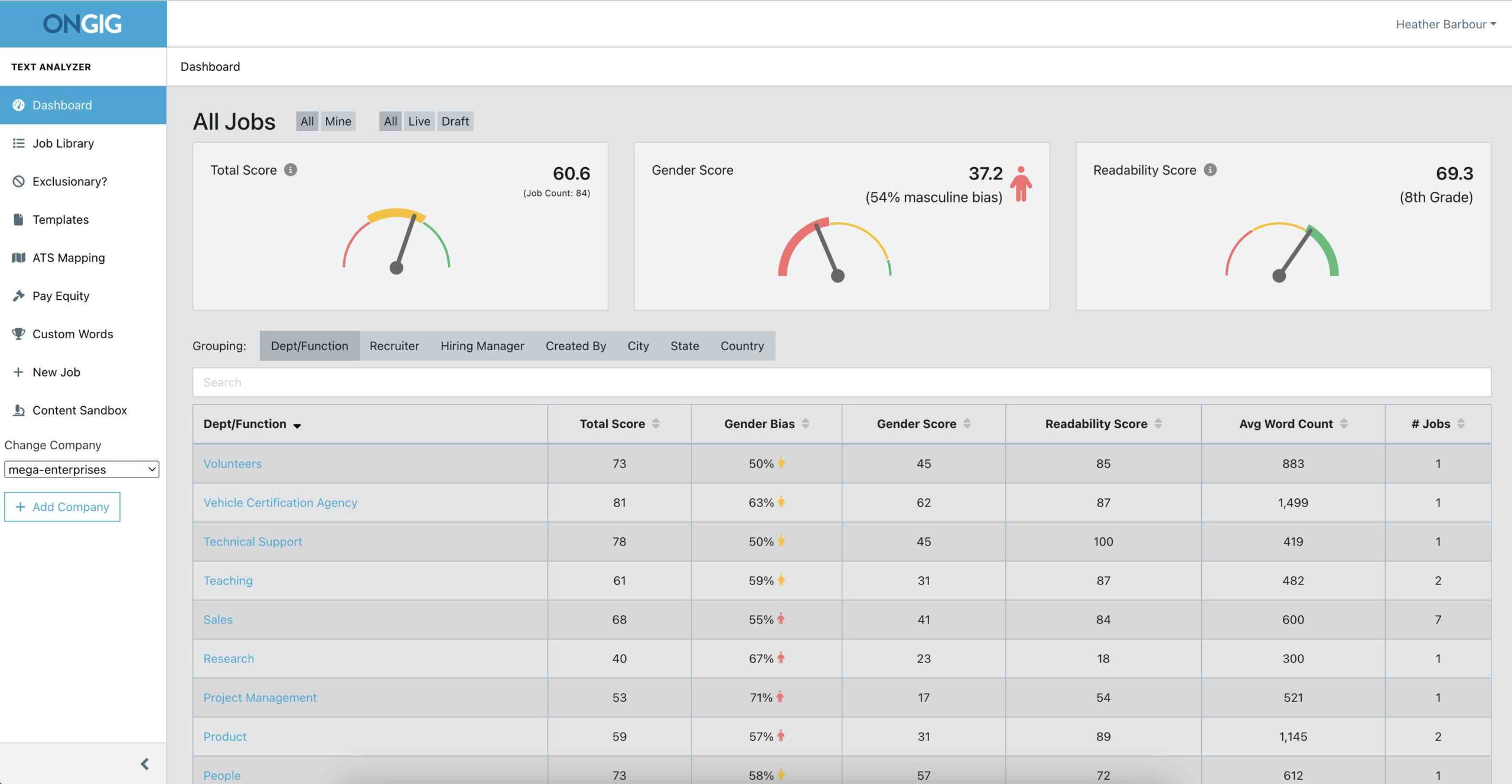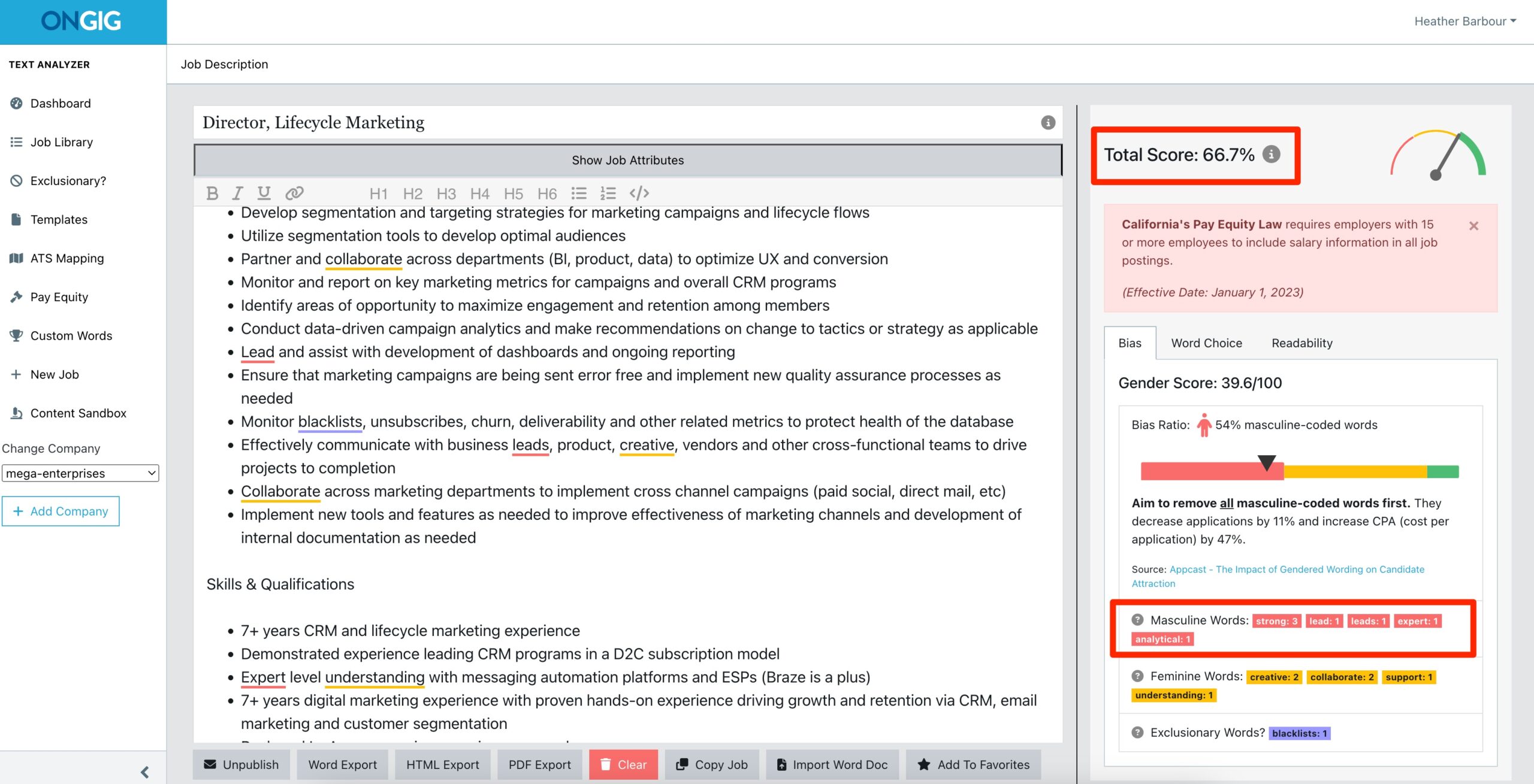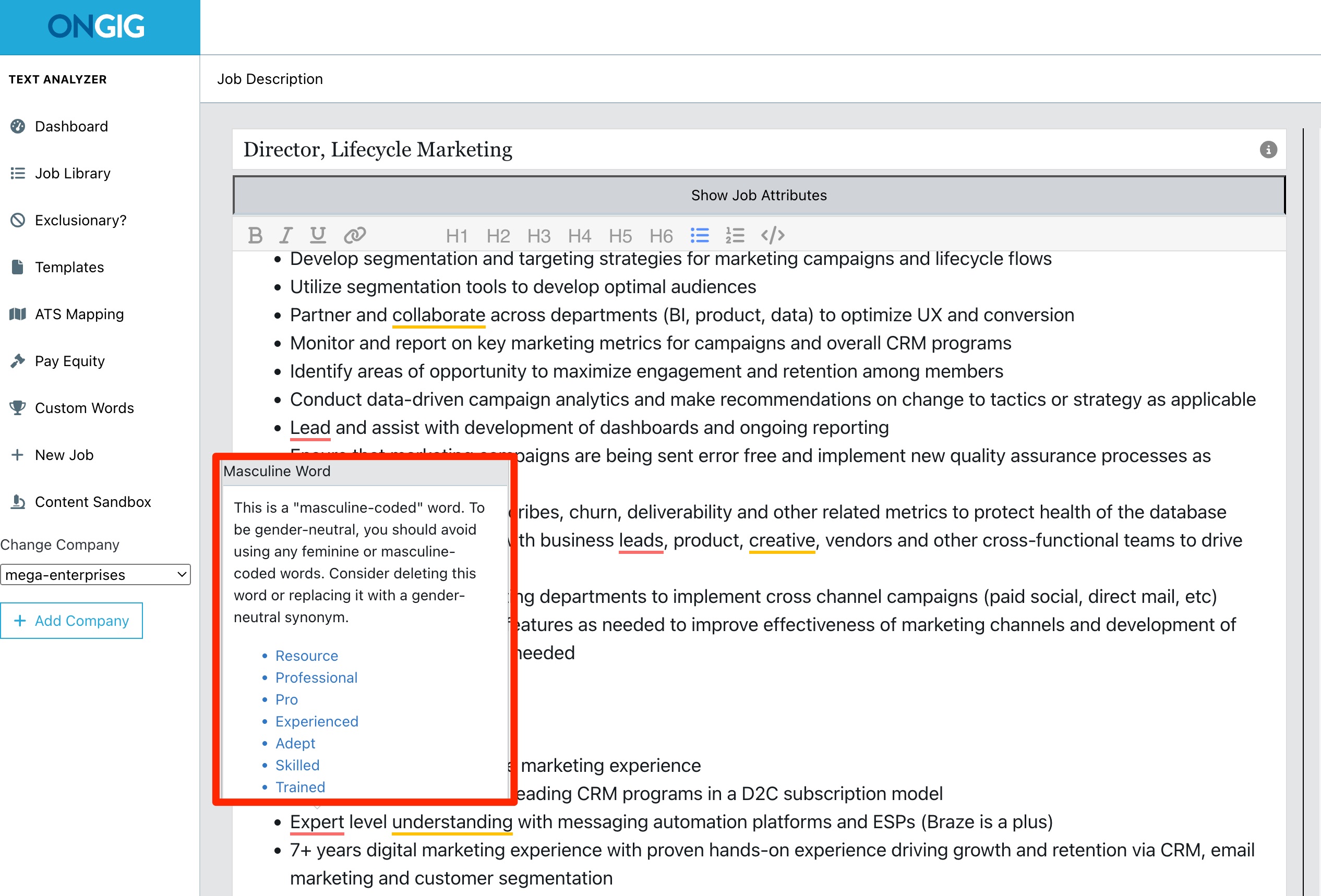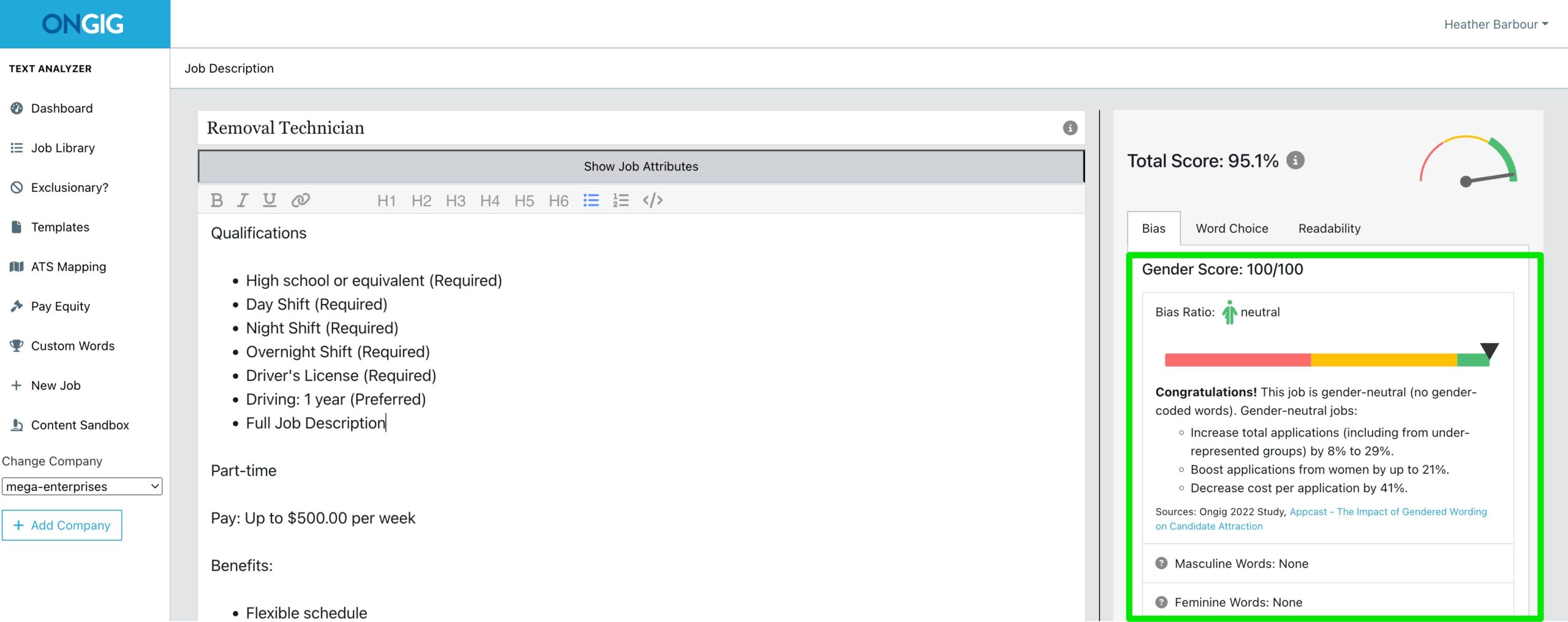- What’s the Difference Between a Job Description, Job Posting, and Job Ad - June 5, 2025
- Top 20+ Diversity Equity Inclusion Titles (with Descriptions) 2024 - October 18, 2024
- A List of Common Offensive (Exclusionary) Words Used in Job Descriptions (2024) - October 18, 2024
Despite the hard work of activists and women in every industry, gender bias remains in the hiring process. Many hiring professionals are aware of more common forms of gender bias, like pregnancy-related discrimination.
Less well-known is biased language in job descriptions.
But biased language in job descriptions, like job descriptions that favor masculine-coded words and use exclusionary language, can turn away qualified female candidates. Even well-meaning hiring professionals may unintentionally use masculine language that discourages female applicants.
You can’t afford to miss out on qualified candidates! Research has shown that job descriptions with less gendered language perform better, saving you on time-to-hire and cost-per-application.
How can you remove gender bias from your job descriptions?
The easiest and best way is to use a gender neutral writing tool. These tools help you and your team assess hiring materials for unconscious gender bias.
Read on for our list of desirable features in a gender neutral writing tool.
(We used Ongig’s Text Analyzer to show anonymous examples of biased job descriptions to point out important things to swap.)
1) Gender Neutral % and Score in Dashboard
Gender neutral writing tools begin with a user dashboard. What you’re looking for here are the basics:
- Gender bias % of all your job descriptions
- Gender Bias by department and location
This helps you zoom out and pinpoint where there’s room for improvement.

2) Find Biased Language
Your gender neutral writing tool then needs to highlight the masculine- and feminine-coded words (e.g. masculine words are highlighted below).
Using too many masculine or feminine words in one piece creates an imbalance that can turn away qualified candidates of a certain gender.
Your tool should show some sort of rating that tells you how gender neutral each job description is. You can experiment with removing certain masculine or feminine words to try to increase the gender neutrality score.

3) Recommend Synonyms for Gendered Words
Your gender neutral writing tool should then suggest synonyms for your geneder-coded words. In the job description below, the word “drive”is highlighted as a masculine word.
The right tool won’t just highlight words with possible gender bias— it will also recommend gender-neutral replacements for those words.
4) Real-Time Score Updates
When you swap in gender-neutral words, a writing tool like Ongig should update your gender neutrality score in real-time.
You should clearly see (we do it in a score format, where every job description receives a score between 0 and 100) when you’ve achieved the goal of creating a more gender-neutral job description.
The 100 score below along with the green person icon tells you that this job is now gender-neutral.

5) Organization-Wide Language Standards
It’s important that any gender neutral writing tool can recognize and implement inclusive language changes in your job descriptions. But what if your writing tool also helped your employees recognize potentially biased words and phrases as they write, so they could avoid ever publishing problematic content?
Ongig’s Text Analyzer has this feature, and we think it should be standard practice for any software that aims to reduce biased language in HR content. With Ongig, you can lock in certain best practices for text, so your recruiting software prevents employees from writing and publishing job descriptions with gender bias.
For example, if you decide that company-wide policy is to refer to “parental leave” instead of maternity or paternity leave. In that case, you can lock in this inclusive language for all future job descriptions.
Why is it important that job descriptions are gender-neutral and free from gender bias?
Gender-neutral language supports an organization’s commitment to LGBTQ+ equality and gender equality at work. Federal law considers discrimination against an individual due to sexual orientation or gender identity as a type of sex discrimination, which is against the law.
Unfortunately, despite the legal protections against discrimination in hiring, it still affects many people in their employment search. Biased language in job descriptions may not be as serious as traditional hiring discrimination, but it still prevents many qualified candidates from accessing work. Unbiased job descriptions attract a wider variety of applicants and therefore reduce hiring costs for employers.
For more tips on writing job descriptions, check out How to Write a Job Description — Best Practices & Examples.
Why I wrote this?
I love content. And part of loving content is to make sure that it’s optimized for the customer/candidate. Check out Ongig’s Text Analyzer tool helps you eliminate gender bias in job descriptions.
